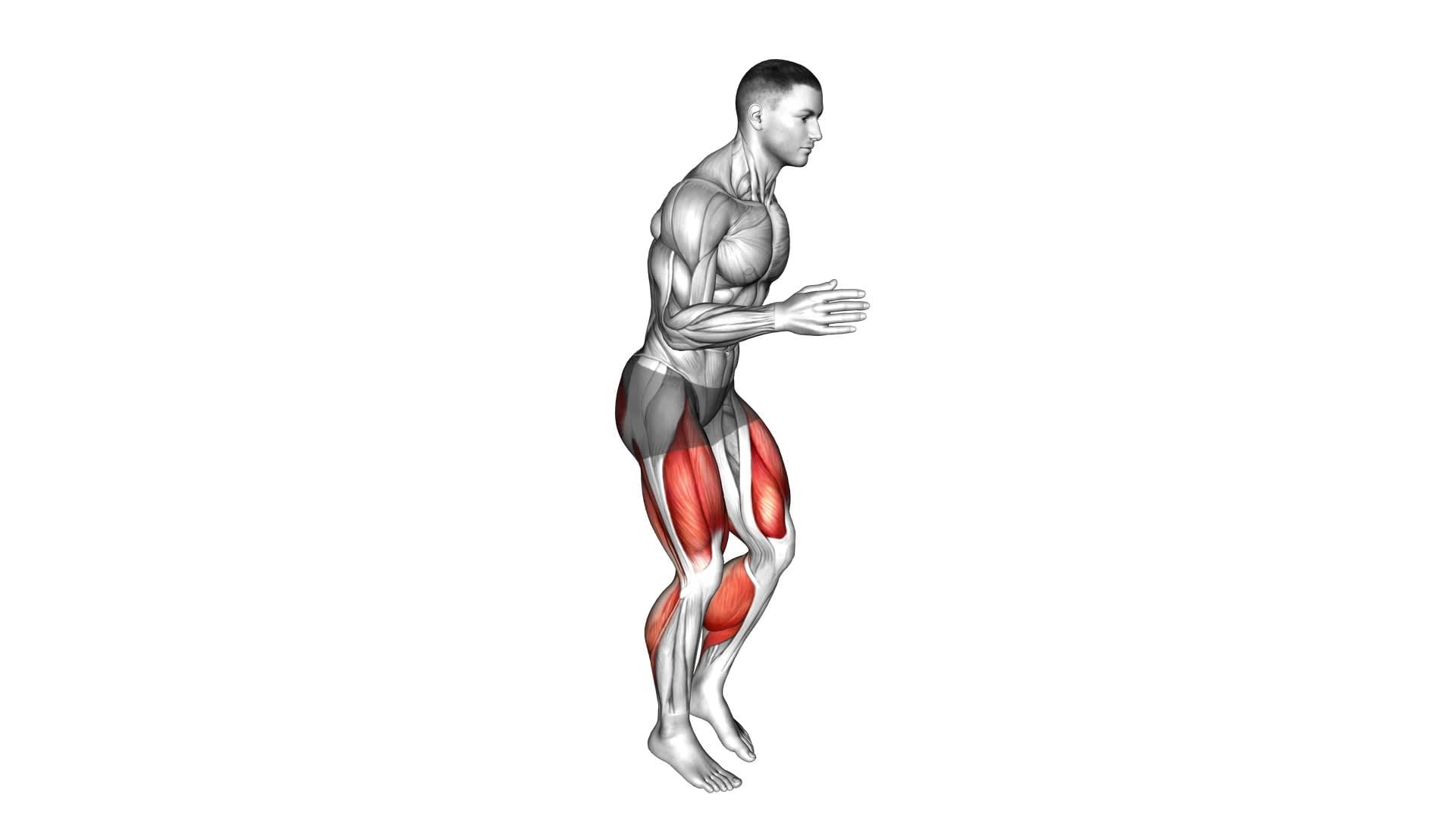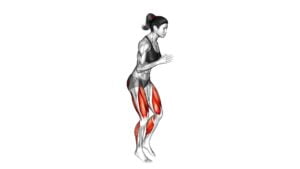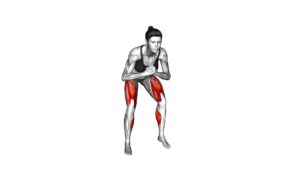Quick Feet Run – Video Exercise Guide & Tips

Get ready to improve your speed and agility with Quick Feet Run! This video exercise guide and tips will show you how to properly perform the Quick Feet Run, avoid common mistakes, and increase your overall athletic performance.
Watch This Exercise Video
With variations and progressions, you'll be able to challenge yourself and reach new fitness goals. Incorporate Quick Feet Run into your workout routine to boost your athletic abilities and take your training to the next level.
Let's get started!
Key Takeaways
- Quick Feet Run improves cardiovascular endurance and helps achieve weight loss goals.
- Proper form and technique, including foot alignment and maintaining proper posture, are important for optimal performance and to prevent injuries.
- Foot alignment is important as it reduces the risk of common running injuries, improves running efficiency, and enhances stability and balance.
- Common form mistakes to avoid include overstriding, lack of arm movement, and hunched posture. Correcting these mistakes can improve running efficiency and speed.
Benefits of Quick Feet Run
Get the most out of your workouts by incorporating the quick feet run, a dynamic exercise that can improve your speed, agility, and overall athletic performance. The quick feet run is a high-intensity exercise that involves rapidly moving your feet in place, simulating a running motion.
By incorporating this exercise into your routine, you can experience several benefits. Firstly, it can greatly improve your cardiovascular endurance. The quick feet run elevates your heart rate, challenging your cardiovascular system and increasing its efficiency over time. This can lead to improved stamina and endurance during other physical activities.
Additionally, the quick feet run has a high calorie burning potential. This exercise engages multiple muscle groups in your lower body, leading to increased energy expenditure and fat burning. Incorporating the quick feet run into your workouts can help you achieve your weight loss goals and improve your body composition.
To get the most out of this exercise, it's important to maintain proper form and technique.
Proper Form and Technique
To maximize the effectiveness of your quick feet run, it's important to focus on proper form and technique. One key aspect is foot alignment, as keeping your feet parallel and landing on the balls of your feet can help prevent injuries and improve your agility.
It's also important to be aware of common form mistakes, such as hunching your shoulders or looking down, as these can affect your posture and overall performance.
Foot Alignment Importance
Ensure proper alignment of your feet to maximize the effectiveness and efficiency of your running form. Proper foot alignment is crucial for preventing injuries and improving overall performance. Here are three key benefits of maintaining proper foot alignment:
- Reduced risk of injury: Proper foot alignment helps distribute the impact of each step evenly, reducing stress on the joints and minimizing the risk of common running injuries such as shin splints, plantar fasciitis, and stress fractures.
- Improved running efficiency: When your feet are properly aligned, your stride becomes more efficient, allowing you to use less energy and maintain a faster pace. This can lead to improved endurance and performance.
- Enhanced stability and balance: Proper foot alignment provides a solid foundation for your body, enhancing stability and balance while running. This helps you maintain control and avoid unnecessary movements that can throw off your rhythm.
Common Form Mistakes
Maintain proper foot alignment to avoid common form mistakes and ensure optimal running technique.
When it comes to running, correcting technique is essential to prevent injuries and improve performance. One common mistake is overstriding, where your feet land too far in front of your body. This puts unnecessary stress on your joints and slows you down.
Another mistake is a lack of arm movement, which can lead to inefficient running and decreased speed. Additionally, running with a hunched posture can strain your back and limit your breathing capacity.
To correct these form mistakes, focus on landing with your feet directly underneath your hips, swinging your arms back and forth in a relaxed motion, and maintaining an upright posture.
Variations and Progressions
Try incorporating different variations and progressions into your quick feet run to challenge yourself and continue improving your agility. Here are three variations and progressions you can try:
- Change of direction: Incorporate sharp turns and changes in direction into your quick feet run. Start by running in a straight line and then quickly change direction by pivoting on one foot. This variation will improve your ability to react quickly and change direction in any situation.
- Speed ladder drills: Use a speed ladder to perform various quick feet exercises. This won't only challenge your footwork but also improve your coordination and agility. Try exercises like the 'in and out' drill or the 'side shuffle' drill to enhance your quick feet run.
- Reactive drills: Add an element of reaction to your quick feet run by incorporating drills that require you to respond to visual or auditory cues. For example, you can have someone call out different colors and you have to react by stepping on the corresponding colored cones. This will enhance your agility and quick thinking abilities.
Common Mistakes to Avoid
To maximize the effectiveness of your quick feet run and prevent potential setbacks, it's important to be aware of common mistakes to avoid. Proper execution of footwork drills is crucial for improving coordination and maximizing the benefits of this exercise.
One common mistake is neglecting proper form. It's essential to maintain an upright posture, engaging your core muscles, and keeping your eyes forward. Avoid slouching or looking down, as this can compromise your balance and coordination.
Another mistake to avoid is overstriding. Keep your steps short and quick, focusing on speed rather than length. Overstriding can lead to decreased agility and increase the risk of injury.
Lack of consistency is another common error. To see progress, it's crucial to practice footwork drills regularly and consistently. Set aside dedicated time for these exercises, and gradually increase the intensity and difficulty as you improve.
Lastly, rushing through the drills without focusing on proper technique can hinder your progress. Take the time to master each movement before moving on to more advanced variations. Pay attention to your foot placement, timing, and coordination.
Tips for Increasing Speed and Agility
To further improve your quick feet run and enhance your coordination skills, here are some tips for increasing speed and agility:
- Incorporate interval training: Interval training involves alternating between periods of high-intensity exercise and short recovery periods. This type of training helps improve acceleration by challenging your muscles to work harder and recover quickly. Try sprinting for 30 seconds, then jogging for 1 minute, and repeat for several sets.
- Engage in agility drills: Agility drills are designed to enhance your ability to change direction quickly and efficiently. These drills can include ladder drills, cone drills, and shuttle runs. By practicing these drills regularly, you can improve your reaction time, balance, and overall agility.
- Focus on proper technique: Pay attention to your running form and mechanics. Ensure that you're utilizing proper arm swing, knee lift, and foot strike. Maintaining a tall posture and engaging your core muscles can also help improve your speed and agility.
By incorporating these tips into your training routine, you can work towards improving your acceleration and overall speed.
Remember to start slowly and gradually increase the intensity of your workouts to avoid injury.
Happy training!
How to Incorporate Quick Feet Run Into Your Workout Routine
To incorporate the quick feet run into your workout routine, start by adding it as a dynamic warm-up exercise. This will help prepare your body for the intense footwork and agility drills that follow. Begin by standing with your feet shoulder-width apart and your knees slightly bent. Lift your heels off the ground and quickly tap the balls of your feet on the floor, alternating between the left and right foot. Keep your movements quick and light, focusing on maintaining a steady rhythm.
Start with a slow pace and gradually increase your speed as you become more comfortable. Aim for 30 seconds to 1 minute of quick feet running as part of your warm-up routine.
Once you have completed the warm-up, you can incorporate the quick feet run into other parts of your workout. For example, you can use it as a cardio interval between strength exercises or as a standalone agility drill.
Frequently Asked Questions
How Long Should I Perform the Quick Feet Run Exercise For?
To maximize the benefits of the quick feet run exercise, it's recommended that you perform it for about 10-15 minutes. This duration allows your heart rate to increase, improving cardiovascular fitness.
Quick feet run also helps to enhance agility and coordination.
To add variety to your workout, you can try different variations of the exercise, such as lateral quick feet or high knees.
Incorporating these variations into your routine can help target different muscles and keep your workouts challenging.
Is Quick Feet Run Suitable for All Fitness Levels?
Quick Feet Run is adaptable to all fitness levels. It offers numerous benefits, regardless of your current level of fitness.
This exercise helps improve agility, speed, and coordination. It also engages multiple muscle groups, including the legs, core, and glutes.
Whether you're a beginner or an advanced athlete, Quick Feet Run can be modified to suit your abilities. Incorporating this exercise into your routine can enhance your overall fitness and athletic performance.
Can Quick Feet Run Help With Weight Loss or Is It More Focused on Improving Agility?
Quick Feet Run is a dynamic exercise that can benefit athletes of all fitness levels. It isn't only focused on improving agility but can also help with weight loss.
The quick, explosive movements involved in this exercise can increase your heart rate and burn calories, making it an effective tool for weight management. Additionally, the improved agility gained from Quick Feet Run can enhance sports performance and give you an edge in various athletic activities.
Are There Any Specific Warm-Up Exercises Recommended Before Performing Quick Feet Run?
Before performing quick feet run, it's important to do warm-up exercises. These exercises help prepare your muscles and prevent injuries. They can include activities like jogging, jumping jacks, and leg swings.
Warm-up exercises increase blood flow and flexibility, making your quick feet run more effective. Quick feet run itself has many benefits, such as improving agility, speed, and coordination.
Can Quick Feet Run Be Done Indoors or Is It Best to Do It Outdoors?
Quick Feet Run can be done both indoors and outdoors, but the benefits of doing it indoors are worth considering.
Indoors, you can control the environment and minimize the risk of injury. Plus, you have a stable surface and can easily measure your progress.
However, doing it outdoors can add variety to your routine and provide a change of scenery. Ultimately, it depends on your preferences and the available space.
Conclusion
Incorporating quick feet run into your workout routine offers numerous benefits, including improved speed and agility.
By mastering proper form and technique, avoiding common mistakes, and gradually progressing through variations, you can maximize the effectiveness of this exercise.
Remember to focus on increasing your speed and agility over time and consult a fitness professional for personalized advice.
Stay consistent, challenge yourself, and enjoy the benefits of quick feet run in your fitness journey.

Author
Years ago, the spark of my life’s passion ignited in my mind the moment I stepped into the local gym for the first time. The inaugural bead of perspiration, the initial endeavor, the very first surge of endorphins, and a sense of pride that washed over me post-workout marked the beginning of my deep-seated interest in strength sports, fitness, and sports nutrition. This very curiosity blossomed rapidly into a profound fascination, propelling me to earn a Master’s degree in Physical Education from the Academy of Physical Education in Krakow, followed by a Sports Manager diploma from the Jagiellonian University. My journey of growth led me to gain more specialized qualifications, such as being a certified personal trainer with a focus on sports dietetics, a lifeguard, and an instructor for wellness and corrective gymnastics. Theoretical knowledge paired seamlessly with practical experience, reinforcing my belief that the transformation of individuals under my guidance was also a reflection of my personal growth. This belief holds true even today. Each day, I strive to push the boundaries and explore new realms. These realms gently elevate me to greater heights. The unique combination of passion for my field and the continuous quest for growth fuels my drive to break new ground.







